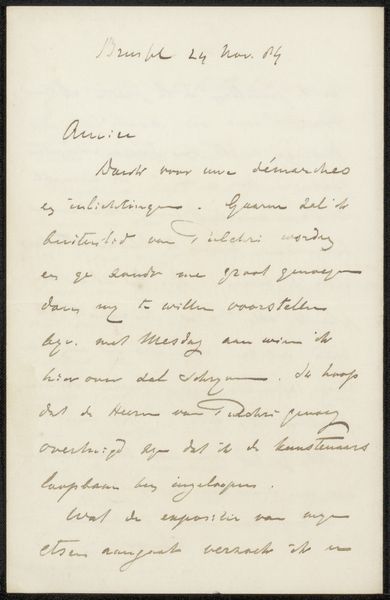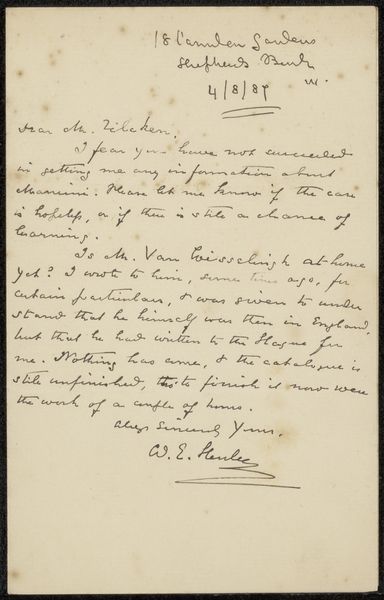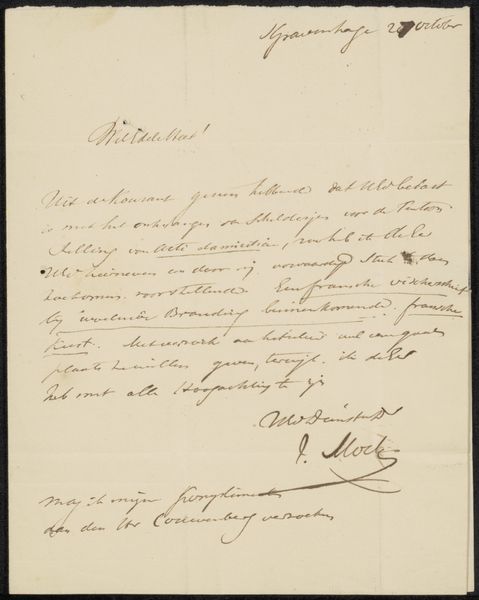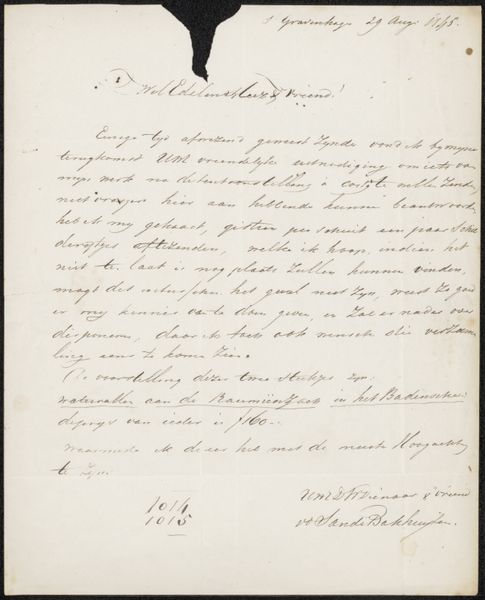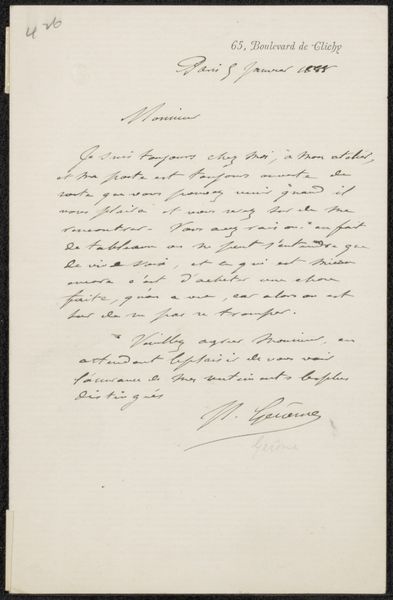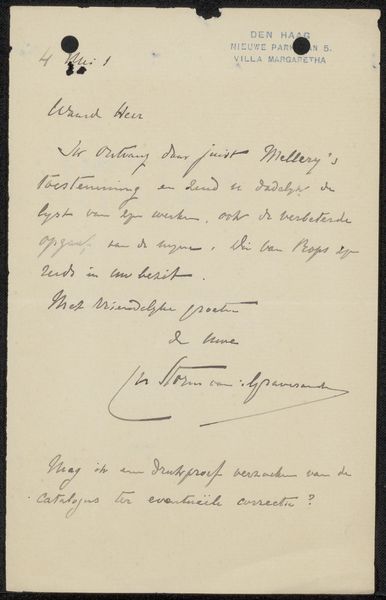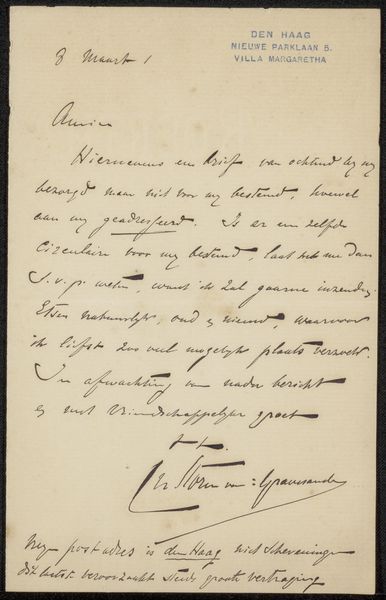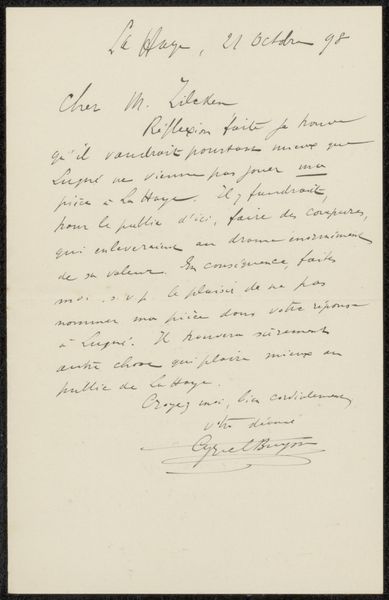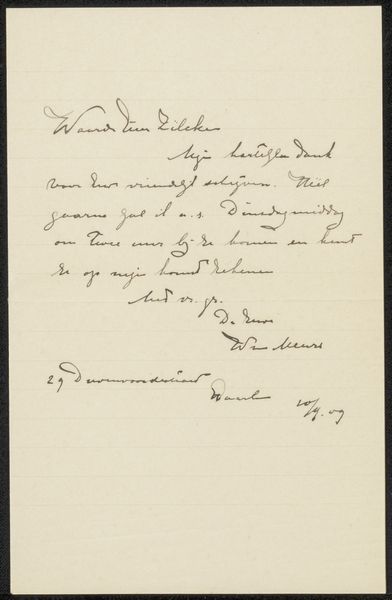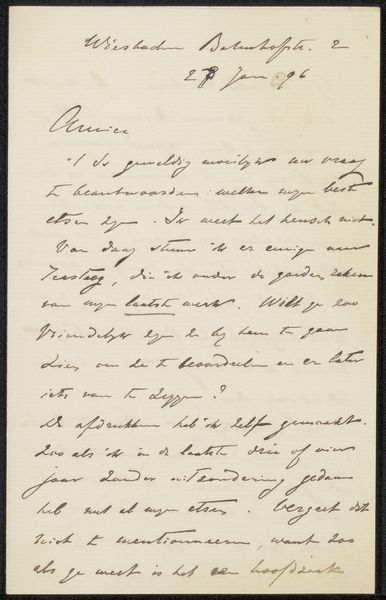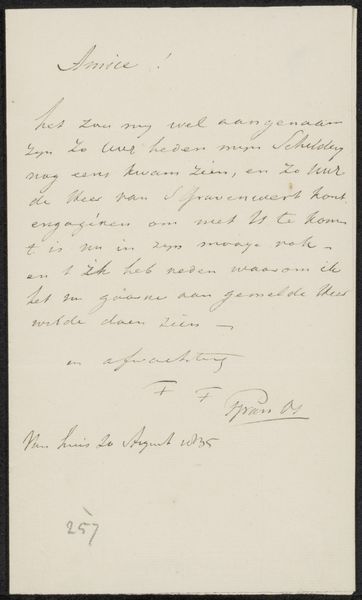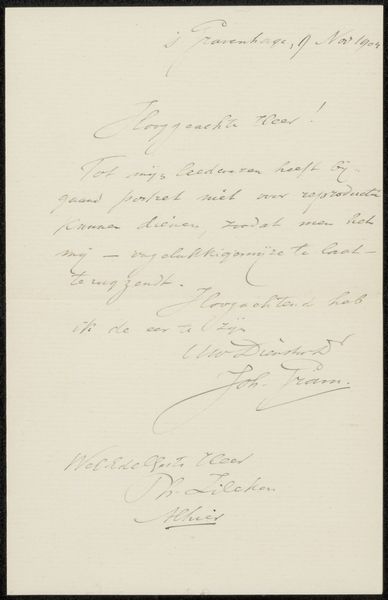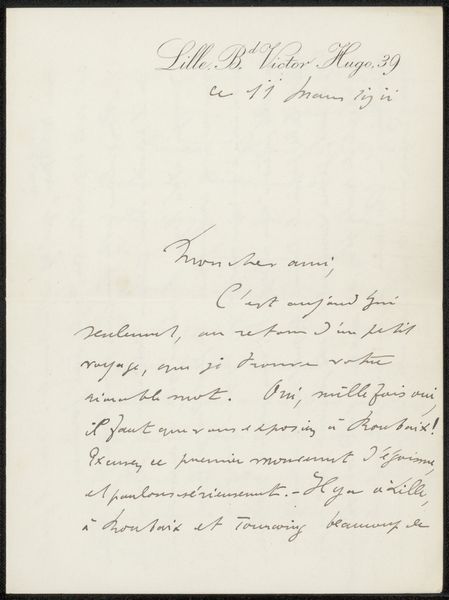
drawing, paper, ink
#
drawing
#
paper
#
ink
Copyright: Rijks Museum: Open Domain
Editor: Here we have "Brief aan Philip Zilcken," a letter likely written between 1901 and 1915 by Carel Nicolaas Storm van 's-Gravesande. It’s ink on paper, housed at the Rijksmuseum. The handwriting gives it such a personal, intimate feel. What strikes you most about it? Curator: I think that's an excellent observation. This letter isn’t just an object; it's a trace of a relationship, a tangible record of communication in a specific historical moment. Think about the social context: the late 19th and early 20th centuries saw increasing interconnectedness alongside rigid social structures. How might the content of this letter, its request and tone, reflect power dynamics, the artistic network, or perhaps a plea for recognition? Editor: That's a great point. It definitely makes you wonder about the specific request, how the relationship between these men impacted artistic and professional opportunities. I’m particularly interested in this talk about reproduction, is that like making more copies of an original artwork, or...? Curator: Precisely. That language suggests that this is somebody who might not have access to their original artwork. We see the artist leveraging connections, attempting to make his artwork more available to the public, and negotiate a terrain often governed by exclusion. This single document exposes broader social and economic mechanisms in the art world. What can be said about it still speaking to our contemporary concerns? Editor: Well, it makes you realize that artists are, perhaps, still vulnerable. The way artwork can be shared is something to behold with digital images now, compared to the constraints apparent here! Thanks, that really broadened my view on this piece! Curator: Indeed. Viewing this "Brief" through a critical lens invites us to interrogate these enduring struggles for recognition, visibility, and equitable access within the art ecosystem. It also forces us to rethink contemporary modes of communication and community.
Comments
No comments
Be the first to comment and join the conversation on the ultimate creative platform.
